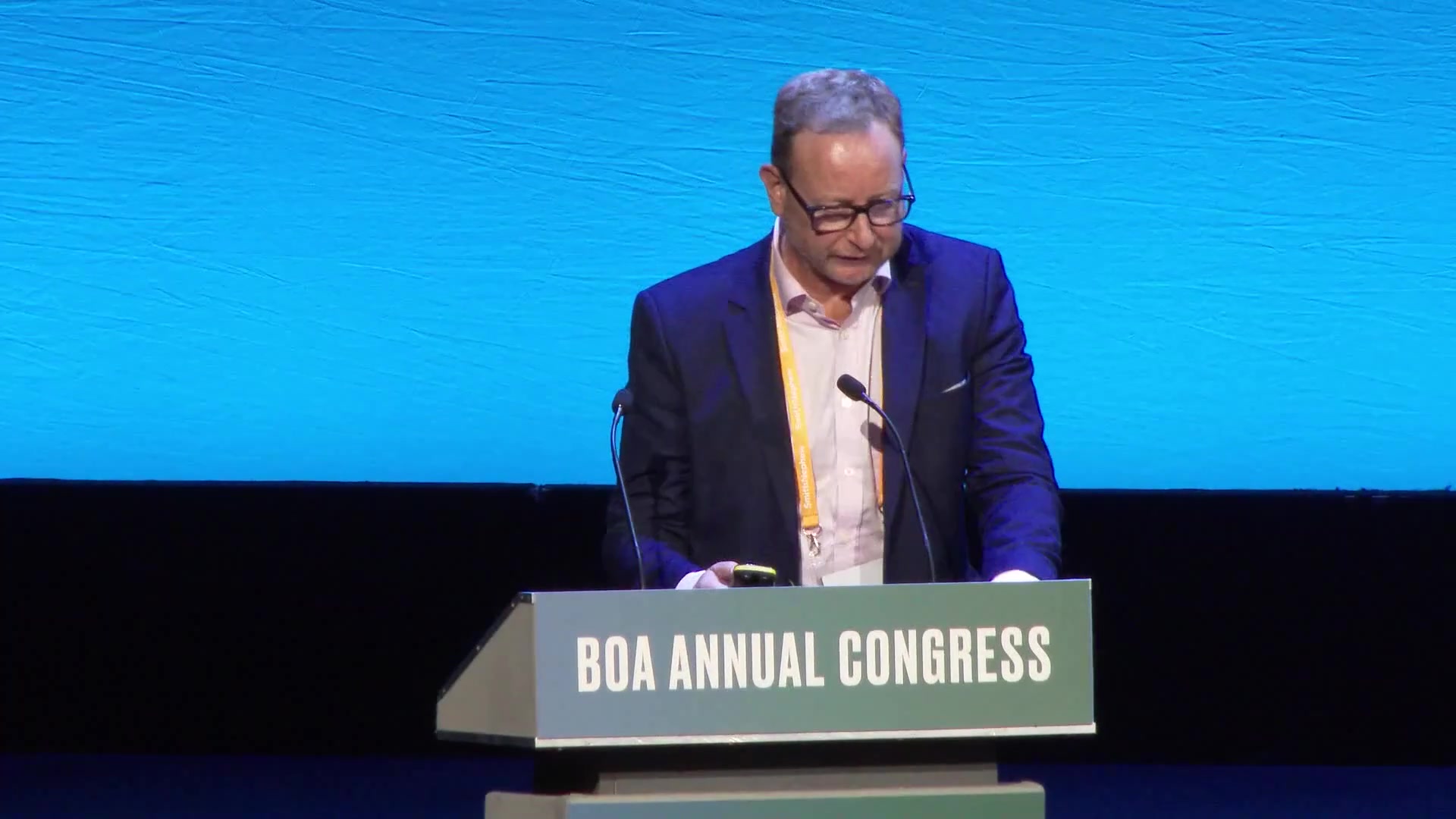Please login to view this media

- Talk
- 20/09/2023
- UK
Total Ankle Replacement versus Arthrodesis (TARVA): A Randomised, Multi-Centre Trial in Patients over 50 With End Stage Ank
Description
In this insightful presentation, Andrew Goldberg discusses the impact of ankle arthritis on patients' quality of life, comparing it to severe conditions like end-stage heart failure and hip arthritis. He notes that ankle arthritis often results from past injuries, affecting individuals in their 40s and 50s, a critical phase in their working lives. While many patients can initially manage their symptoms with non-surgical approaches, those who do not respond face two primary surgical options: ankle fusion and ankle replacement.
Goldberg explains that ankle fusion effectively eliminates joint movement but can lead to complications in adjacent healthy joints due to compensatory stress. Ankle replacement, in contrast, aims to maintain joint function and potentially reduce these external stresses, though its efficacy relative to fusion had previously not been directly compared in rigorous studies.
The presentation outlines the background and methodology of a significant research initiative funded by the National Institute for Health Research (NIHR), positioning itself as the first multicentric randomized controlled trial for ankle arthritis. Goldberg emphasizes the importance of understanding patient demographics, especially the prevalence of adjacent joint arthritis, and the necessity for a meticulously designed research framework to secure funding.
As the findings are revealed, the data shows that both surgical approaches yield similar improvements in quality of life at the two-year mark, although fixed bearing ankle replacements demonstrate statistically significant advantages over fusion. Notably, complications from both procedures differ: ankle replacements have a higher incidence of wound healing issues, while ankle fusions report nonunion rates. The economic analysis suggests that both treatments are cost-effective options, comparable to hip replacements.
Despite promising results, Goldberg acknowledges the limitations of the study, particularly the necessity for continued long-term follow-up and reevaluation of outcome measures to improve sensitivity in future assessments. He concludes by underscoring the collaboration among multiple surgeons and committees that contributed to this groundbreaking research.